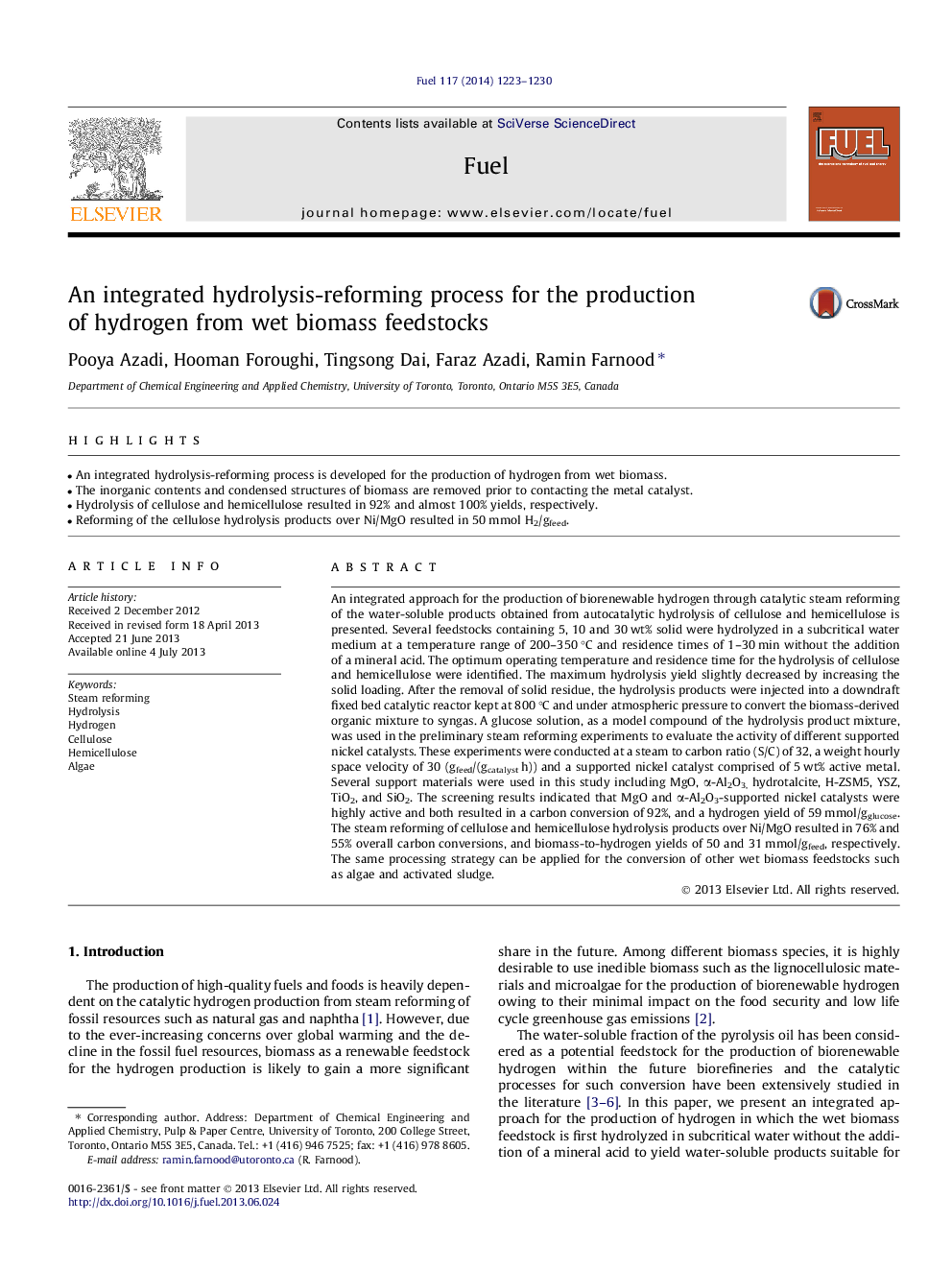| کد مقاله | کد نشریه | سال انتشار | مقاله انگلیسی | نسخه تمام متن |
|---|---|---|---|---|
| 10272256 | 461160 | 2014 | 8 صفحه PDF | دانلود رایگان |
عنوان انگلیسی مقاله ISI
An integrated hydrolysis-reforming process for the production of hydrogen from wet biomass feedstocks
ترجمه فارسی عنوان
یک فرآیند اصلاح هیدرولیز یکپارچه برای تولید هیدروژن از مواد زیست توده مرطوب
دانلود مقاله + سفارش ترجمه
دانلود مقاله ISI انگلیسی
رایگان برای ایرانیان
کلمات کلیدی
اصلاح بخار، هیدرولیز، هیدروژن، سلولز، همی سلولوز، جلبک،
موضوعات مرتبط
مهندسی و علوم پایه
مهندسی شیمی
مهندسی شیمی (عمومی)
چکیده انگلیسی
An integrated approach for the production of biorenewable hydrogen through catalytic steam reforming of the water-soluble products obtained from autocatalytic hydrolysis of cellulose and hemicellulose is presented. Several feedstocks containing 5, 10 and 30 wt% solid were hydrolyzed in a subcritical water medium at a temperature range of 200-350 °C and residence times of 1-30 min without the addition of a mineral acid. The optimum operating temperature and residence time for the hydrolysis of cellulose and hemicellulose were identified. The maximum hydrolysis yield slightly decreased by increasing the solid loading. After the removal of solid residue, the hydrolysis products were injected into a downdraft fixed bed catalytic reactor kept at 800 °C and under atmospheric pressure to convert the biomass-derived organic mixture to syngas. A glucose solution, as a model compound of the hydrolysis product mixture, was used in the preliminary steam reforming experiments to evaluate the activity of different supported nickel catalysts. These experiments were conducted at a steam to carbon ratio (S/C) of 32, a weight hourly space velocity of 30 (gfeed/(gcatalyst h)) and a supported nickel catalyst comprised of 5 wt% active metal. Several support materials were used in this study including MgO, α-Al2O3, hydrotalcite, H-ZSM5, YSZ, TiO2, and SiO2. The screening results indicated that MgO and α-Al2O3-supported nickel catalysts were highly active and both resulted in a carbon conversion of 92%, and a hydrogen yield of 59 mmol/gglucose. The steam reforming of cellulose and hemicellulose hydrolysis products over Ni/MgO resulted in 76% and 55% overall carbon conversions, and biomass-to-hydrogen yields of 50 and 31 mmol/gfeed, respectively. The same processing strategy can be applied for the conversion of other wet biomass feedstocks such as algae and activated sludge.
ناشر
Database: Elsevier - ScienceDirect (ساینس دایرکت)
Journal: Fuel - Volume 117, Part B, 30 January 2014, Pages 1223-1230
Journal: Fuel - Volume 117, Part B, 30 January 2014, Pages 1223-1230
نویسندگان
Pooya Azadi, Hooman Foroughi, Tingsong Dai, Faraz Azadi, Ramin Farnood,
